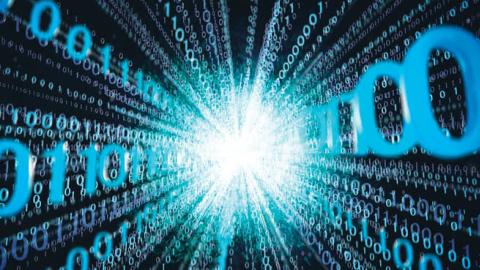We don’t usually think of Ivanka Trump as a key scientific advisor to her father. But when it comes to quantum information science, she’s been a leading point-woman in pushing the country to embrace the next big scientific and technological breakthrough in the 21st century: quantum computers and quantum-based communications.
Ivanka helped to oversee passage of the National Quantum Initiative Act in 2019, which authorized pumping $1.25 billion federal dollars into the quantum effort. Now she’s been part of the initiative announced by the White House yesterday, which will award $1 billion to the Department of Energy and National Science Foundation to establish 12 new artificial intelligence and quantum information science (QIS) research institutes nationwide, under the auspices of the Office of Science and Technology Policy (OSTP), as the Department of Energy (DOE) steadily emerges as the centrifuge for quantum research in America.
This isn’t surprising. The federally-funded DOE national labs, including the labs that will be getting $625 million over five years—Argonne, Brookhaven, Fermi, Oak Ridge and Lawrence Berkeley—bring enormous expertise over multiple scientific and engineering disciplines to the new QIS Centers, including quantum physics. And since many of these labs have been involved in nuclear research even longer—including nuclear weapons—they and Energy Secretary Dan Brouillette bring a clear-eyed understanding of the national security challenges of QIS, as well as its scientific and economic promise.
So does another Trump team member guiding this new quantum effort, Chief Technology Officer Michael Kratsios. Mr. Kratsios was also involved in the passage of NQIA, and is quoted in the White House briefing yesterday as saying, “Today, the Trump Administration is making an unprecedented investment to strengthen American leadership in AI and quantum, and to ensure the Nation benefits from these emerging technologies.” Of course the National Science Foundation will have an important role in the effort, as the investment announced this week builds on last month’s announcement of $75 million for three new Quantum Leap Challenge Institutes to be awarded by NSF.
Likewise, both House and Senate versions of the National Defense Authorization Act urges the Department of Defense to deepen its commitment to assessing the national security implications of quantum computing, including its threat to existing public encryption systems. The Senate’s version also urges OSTP to develop a plan for increasing federal spending on “emerging technologies” including QIS, to $10 billion a year by fiscal year 2025: not coincidentally, the same year Beijing set as its target date in its “Made In China 2025” program for investing in key advanced technologies like quantum.
Fortunately, OSTP has the perfect person to develop this plan in its new Director of its National Quantum Coordination Office, Dr. Charles Tahan, who has a keen appreciation of the national security implications of quantum, including the risks of shortfalls in our cryptographic defenses against a quantum computer attack by China or any other advanced power.
Still, the Department of Energy and its lab directors and staff are going to be front and center in the federal effort to secure American leadership in the quantum race. As such, two other aspects of this race need to be part of the DOE formula for future quantum success.
The first is a strong emphasis on quantum manufacturing. Getting the right components for superconducting quantum computing, and trusted (i.e. not made in China) hardware for quantum random number generators and quantum networks enabling the future of an essentially hackproof Quantum Internet, can’t be allowed to become a manufacturing bottleneck for advancing QIS. Another key member of the Trump Administration, Peter Navarro, understands how important a made-in-U.S.A. quantum industry will be for our economic as well as our national security, and is a strong supporter of what’s happening with the federal effort to foster that sector of our future economy.
The second aspect is increasing cooperation with our closest allies in QIS, through joint research and development at the new DOE QIS Centers. The other members of the so-called Five Eyes intelligence network (Canada, U.K., Australia, and New Zealand), all bring amazing expertise to quantum research, including quantum computing and manufacturing; as do Japan, South Korea, Israel, and India. A host of important collaborative enterprises can emerge in the shadow of the Centers, from quantum cryptography and optics to composite materials that will help to make the quantum future a reality.
Three years ago I called for a Manhattan Project-style effort to make sure America became the dominant quantum power in the 21st century. We aren’t there yet: but this week we took another major step closer to making sure this transformative technology serves the interests of science, democracy, and freedom, not tyranny. It’s a win not just for the Trump administration and the Department of Energy, but for all of us.
Read in Forbes



















